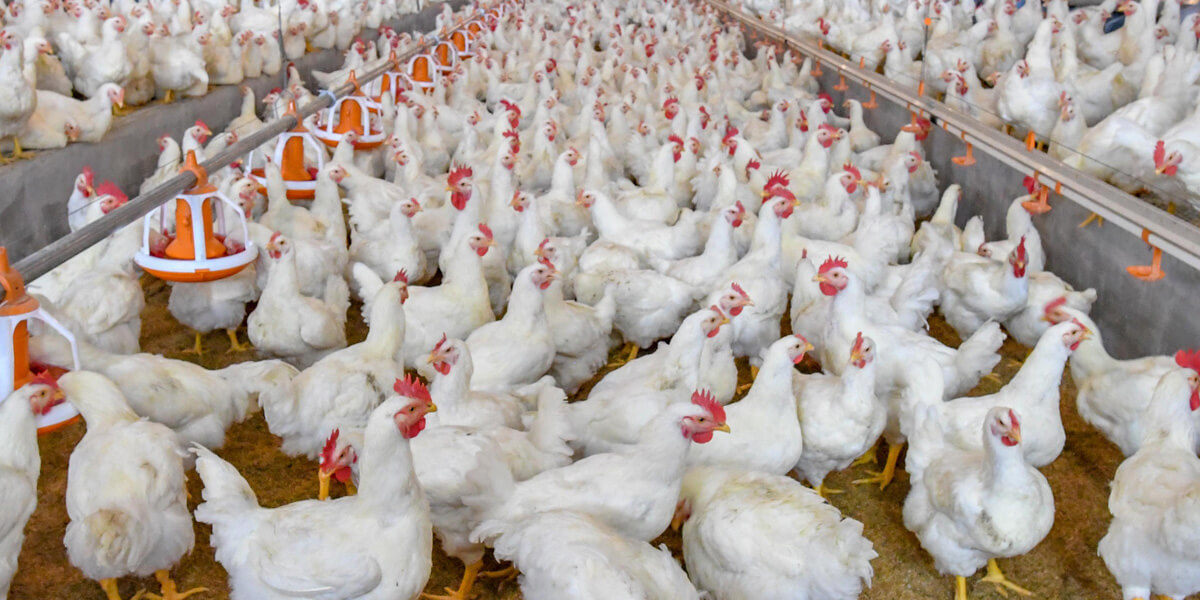Bacterial chondronecrosis with osteomyelitis (BCO) is the most common cause of lameness in chickens in the United States, the European Union and South America. It affects clinically about 1.5% of all broilers grown to yield weights and can also affect turkeys and ducks.
Learn more: Strategies to Help Prevent or Manage BCO Lameness
Typically, 1.5% of broilers are culled from flocks that are affected by BCO lameness, but epidemic outbreaks can affect more than 15% of a flock. The highest incidences are in the fastest-growing flocks.
At the Zinpro International Poultry Seminar in Chicago, Dr. Adnan Alrubaye, DVM and Ph.D., Department of Poultry Science, and Biological Sciences, graduate program in Cell and Molecular Biology, University of Arkansas, gave a presentation about the impact of BCO lameness in chickens.
I caught up with him afterward, to discuss the details.
Marco Rebollo: How does BCO lameness work and how do broilers become infected?
Adnan Alrubaye: BCO lameness is caused by a variety of pathogenic microorganisms and stress factors, and somehow related to the growth of broilers, microfractures and developing circulation in the growth plates of the femur and tibia.
Bacteria can leak from the respiratory system and/or the gastrointestinal tract into the bloodstream and eventually settle in those growth plates, leading to necrosis. Eventually, the bones will weaken to the point that the bird can no longer stand or walk.
Even when clinical lameness is found in a low percentage, it indicates a larger number of other problems, such as damaged epithelial barriers (probably by coccidiosis, necrotic enteritis, dysbiosis, respiratory viruses, chronic respiratory disease, etc.), bacterial subclinical infections, potential food safety problems, and pain that compromises welfare.
MR: Are there ways to identify subclinical symptoms of BCO lameness in chickens?
AA: Currently, there is no identified method to diagnose the subclinical lesions in live birds, which is why BCO lameness is a serious issue. It is considered an important welfare issue that impacts the poultry industry in the U.S. and in many other countries across the world.
As a general rule, birds that experience pain due to BCO lameness try to hide their symptoms to avoid being attacked by other birds. As a result, it can be very difficult to identify any clinical symptoms of BCO lameness in chickens before it is too late. In many cases, we can only identify BCO lesions whenever birds start showing overt, clinical symptoms of lameness and/or during necropsy.
MR: You mentioned that there were other stressors that could lead to BCO lameness in chickens. Do you have any examples?
AA: There are many factors that can stress birds like rapid growth, handling, transportation and illnesses. We have been using the wire flooring model developed by emeritus professor, Dr. Robert Wideman, Department of Poultry Science, University of Arkansas, to create stress experimentally in order to induce lameness. In addition, we have developed a bacterial challenge with Staphylococcus agnetis (S. agnetis), that mimics the lameness epidemic for birds on litter flooring. The wire flooring model creates lameness in chickens by inducing a physical stress on long bones, which will ultimately lead to microfractures in the proximal femoral and tibial heads. In addition, birds naturally prefer to walk on litter, so not allowing birds to have access to litter can increase their stress level and weakens the intestinal tight junctions, allowing bacteria to leak from the intestine into the bloodstream and, eventual colonization of the proximal femoral and tibial heads.
Learn More: Performance Trace Minerals Strengthen Tight Junctions
Using the wire flooring model or the bacterial challenge with S. agnetis can increase the incidence of lameness 50% to 70%.
MR: You conducted research studying the effect of supplementing broilers with Availa®ZMC on the incidence of lameness. What did you find?
AA: Feeding 1 kg of Availa-ZMC per metric ton of feed resulted in a significant reduction in BCO lameness in chickens and delayed the incidence by four to five days.
Two trials were conducted at the University of Arkansas, one using the wire flooring model and the other one on litter flooring incorporating BCO pathogen, S. agnetis isolate 908, to simulate a high virulence, natural lameness epidemic in a barn. Birds fed Availa-ZMC in the wire flooring trials experienced a reduction of up to 29% BCO lameness, while the birds fed Availa-ZMC in the S. agnetis challenge on litter trial showed a 23% reduction in the occurrence of BCO lameness. We also found that the birds fed Availa-ZMC had peripheral blood monocytes that were much more active in killing S. agnetis 908 in in vitro assays.
The data from these studies will be published in 2020.
The trace minerals in Availa-ZMC — zinc, manganese and copper — improve gut integrity by strengthening the tight junctions in the intestine so that bacteria won’t leak out and settle into microfractures in the growth plates. Availa-ZMC also helps improve bone quality and the overall health and immune function of the birds.
We’re happy to see this large of a reduction in the incidence of lameness in chickens when using Availa-ZMC, and we’re looking forward to doing more research with these products.
Performance Trace Minerals Reduce Lameness in Chickens
Improving gut health, strengthening tight junctions and improving bone strength are all key to preventing BCO lameness in chickens. To learn how performance trace minerals, like those found in Availa-ZMC, improve overall health in your poultry operation, contact your Zinpro representative today.

